
Wednesday, 26 February 2025
AI regulation around the world

Tuesday, 19 November 2024
Ruthless Japan beat China to move to brink of World Cup qualification

Thursday, 5 September 2024
IANS Analysis: Why no one trusts Chinese?

Monday, 17 June 2024
Meet Bao Li and Qing Bao–the National Zoo's Returning Pandas After a Panda-less Year in D.C.
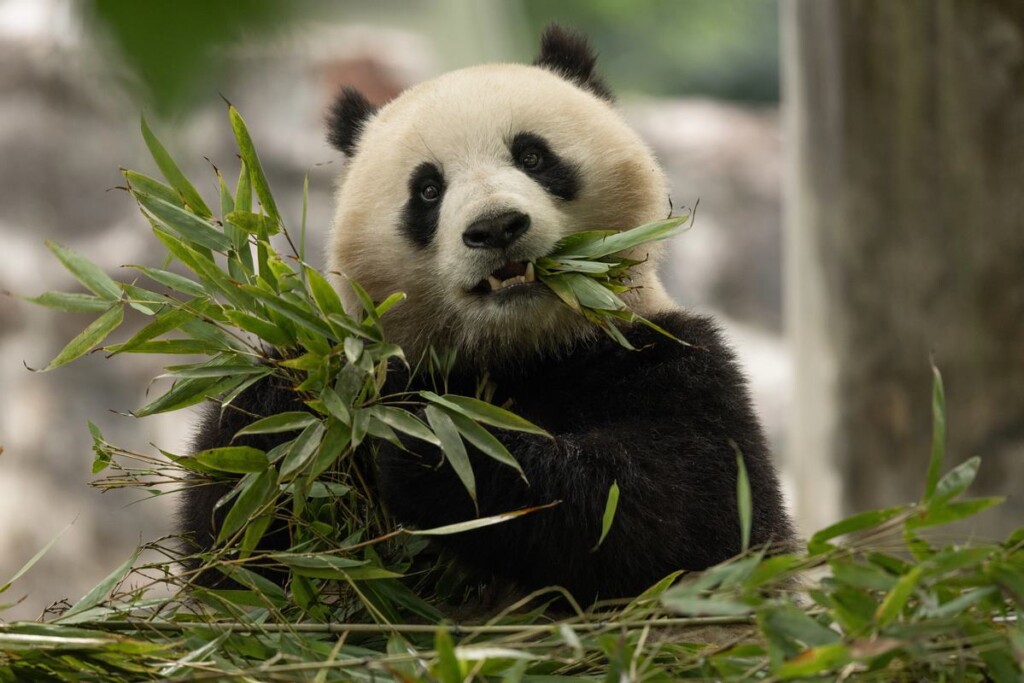
Thursday, 6 June 2024
Chongqing Airlines to resume services to Colombo from 24 June

- Returns after four year hiatus with three weekly flights
Thursday, 16 May 2024
US President Joe Biden imposes heavy tariff on Chinese electric vehicles and batteries
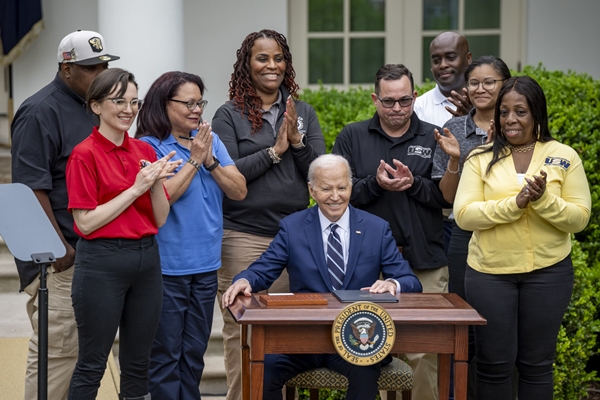
Friday, 10 May 2024
Electric cars pile up at European ports as Chinese firms struggle to find buyers

China’s automotive industry has revolutionised over the past decade, from producing basic western clones to making cars that equal the world’s best. As the manufacturing powerhouse of the world, China is also producing them in huge volumes.
However, Chinese cars are facing difficulties in finding buyers in Europe. Imported cars, many of which are Chinese electric vehicles, are piling up at European ports, with some spending up to 18 months in port car parks as manufacturers struggle to get them onto people’s driveways.
Why is this, though? Chinese electric vehicles in particular are getting positive reviews. Having driven them myself, I can attest to them matching, or even exceeding, the well-known European brands in range, quality and technology.
But entering an established market as a challenger is a complex operation. Chinese makers will have to contend with buyer wariness, a lack of brand image, trade protectionism and rapid outdatedness.
Lack of buyer faith
China’s automotive expansion programme draws parallels with the moves made by Japan in the 1960s and 70s. At that time, the product coming from Japan was commendable but lacked the finesse, design and longevity of their western counterparts. Japanese cars were thought of as tinny, underpowered and susceptible to rusting, as well as looking very generic compared to stylish European designs.
Memories of Japan’s involvement in the second world war were also fresh in (particularly American) buyer’s minds, who were slow to forgive a nation that launched the Pearl Harbour attacks. However, by constantly focusing on a reliable, relatively cheap and increasingly stylish product, Japan slowly turned this around to become the automotive powerhouse of the 1990s and 2000s.
China is viewed with suspicion by many westerners, and its carmakers are similarly hampered by their recent legacy of producing both endorsed and illegal clones of European cars. But with the lessons of the Japanese to learn from, Chinese cars are rapidly advancing to match and exceed existing alternatives.
Strategic purchases of brands like Volvo, Lotus and MG have also given China existing brands that are respected and, more importantly, have some of the best engineering knowledge in the world.
Yet, even after buying up western brands, Chinese automakers have proven unable to buy loyalty from existing customers of brands like BMW, Porsche, Ferrari and Ford. For these buyers, the history of the brand in terms of known reliability and even things like motor sport success is something that Chinese makers, like the Japanese, will have to build up over time.

It was Ford dealers who, in the 1960s, coined the phrase: “Win on Sunday, Sell on Monday”. The phrase is as an adage to attest the fact that if buyers see a car winning a race, they’ll be motivated to go out and buy one.
Existing manufacturers also have a legacy of reliability that buyers have experienced for themselves, giving a huge brand loyalty benefit. Add to this a lack of an established dealer network outside of China and you see how Chinese makers struggle against the established competition.
A challenging trade environment
China has a price advantage compared to Europe or the US. Economies of scale, excellent shipping links and cheap labour mean that Chinese cars are cheaper both to make and buy.
However, in many countries they are subject to high import tariffs. The EU currently imposes a 10% import tariff on each car brought in. And in the US, car imports from China are subject to a 27.5% tariff.
These tariffs may well rise further. The EU is conducting an investigation into whether its tariff is too low. If it concludes this later this year, higher duties will be applied retrospectively to imported cars.
Cars, and specifically electric vehicles, are also in a phase of their development where they see rapid changes and updates. Traditionally, vehicle models would see a market life of between four and seven years, perhaps with small updates in trim, colour palette or feature availability.
But Tesla has turned this on its head. The Tesla Model S, for example, has seen almost continuous product updates that make it barely recognisable in terms of hardware from a car released in 2012. Chinese automakers have taken note. They are bringing out new models around 30% faster than in most other nations.
Tesla is supporting owners of older cars with upgrades, at extra expense, to bring them in line with the latest hardware. Without guaranteed software support like this, the rate at which Chinese automakers are bringing out new models could make buyers wary that the product they have bought will soon become outdated compared to buying a car on a more traditional update cycle.
How to succeed
Many of these factors can be fixed. They also chime more with private buyers than business buyers, who are more concerned with cost. Chinese makers would be well-advised to push harder into this market.
In the UK, the fleet market dwarfs the private market, and the situation is similar in Europe. Selling en masse to fleets and rental companies gets more cars on the road and allows more data about reliability to feed into the market.
The road to succeeding in a new market such as the EU will be slow and bumpy. But it’s clear that China is laser focused on its global push. It remains to be seen whether this lack of buyers can be turned around.
This article is republished from The Conversation under a Creative Commons license. Read the original article.
Sunday, 5 May 2024
China Mobile’s three-pronged strategy to boost the 5G-A ecosystem

Viewpoint:
- Greater Speeds: 5G-A offers improved peak rates of 10 times more than that of 5G.
- Improved Services: With 5G-A, the end users will have access to tiered key service assurance that meets the communication service requirements of specific forms or customer groups.
- Innovative Products: 5G-A enables accelerated real-time 3D rendering, game loading and cloud collaboration, which is known to improve the performance of 5G New Calling, cloud phones and cloud computers.
- Massive Connections: Passive IoT technology enables a transformation from single-point communications to ultra-long-distance and ultra-large-scale passive connections of things, meeting customers’ requirements for efficient management of modern assets.
- Improved Control: 5G-A’s deterministic networks ensure highly reliable and low-latency transmission of key data, meeting customer needs for superior network performance that supports precision control and collaborative operations.
Thursday, 2 May 2024
Five Things Chinese Investment Means for Zimbabwe
- By Fani Zvomuya Correspondent: President Mnangagwa recently toured the Manhize Steel Plant, a bustling investment near Mvuma that is the face of steel manufacturing revival in Zimbabwe; and the lofty position the country will attain as Africa's giant.
- The Manhize Steel Plant is owned by Chinese company Tsingshan Holding's local subsidiary, DINSON Iron and Steel. The steel plant has just begun production of pig iron and will in the course of the year manufacture steel billets and bars, all necessary for the steel industry which supports various sectors of the economy such as construction, agriculture, mining and so on.
- Dinson's Manhize plant will be the biggest in Africa at its peak, according to its projected phases; and this fact bears quite some symbolism, as China helps Zimbabwe to rise from the ashes and become a shining example.
- The country's own steel manufacturing had been battered because of the collapse of a State entity, Ziscosteel; and massive de-industrialisation that has taken place in the past two decades, mostly due to sanctions imposed on Zimbabwe by Western countries. Zisco was among entities initially put under the embargo.
- While addressing stakeholders during the Manhize Steel Plant, the President underlined the importance of Chinese investments in the southern African nation.
- He said: "I applaud companies from the People's Republic of China for the continued investments in our economy. This investment through Dinson Iron and Steel Company signifies more than just financial support; it represents a shared vision for a brighter future between Zimbabwe and China."
- This article unpacks the significance of Chinese investments in Zimbabwe, and the benefits of greater cooperation between the two countries.
- In particular, there are five key attributes of Chinese investments that underline the importance of Chinese foreign direct investment as a function of the comprehensive strategic partnership between the two sides.
- From size and speed, to spreading tentacles in Africa
- The first key attribute of Chinese investments in Zimbabwe, which Manhize steel project signifies is size.
- China is one of Zimbabwe's major source of Foreign Direct Investment, and it is no surprise that the biggest projects that the country has set up have come from China to the Manhize steel project is worth US$1.5 billion.
- What is important to note is that it is at the apex of a value chain comprising of production of ferrochrome and coking coal, which means that Dinson is the only company with such a well-knit business concept, worth close to US$3 billion.
- Dinson sister companies, Afrochine (ferrochrome) and Dinson Colliery (coking coal) have been the major producers and exporters of their respective products in Zimbabwe.
- The Dinson group also owns Gwanda Lithium as it pivots to new energy materials as part of its investment portfolio, which may include other minerals such as copper.
- Size matters. The Tsingshan group, the largest steelmaker and a Fortune 500 company, is showing the extent of Chinese investments in the country.
- There are a number of investments that are also big in size and scale.
- These include two major mining projects in the lithium sector through Sinomine Bikita Lithium, and Zhejiang Huayou Cobalt's Prospect Lithium Zimbabwe which have opened over the past two years.
- The projects were worth close to US$2 billion combined in investments.
- The biggest future and prospective investments in Zimbabwe will likely to be Chinese.
- These include a battery manufacturing plant in Mapinga, Mashonaland West; as well as the US$1 billion floating solar farm in Kariba.
- The second key attribute of Chinese investments in Zimbabwe is speed.
- Many projects done by Chinese companies have been completed in record time, as they have breezed through construction to begin operations quickly and efficiently.
- Rapid progress seen on Chinese projects has been seen by many locals as a thing of marvel.
- It is China speed. Projects such as Prospect Lithium Zimbabwe's Arcadia lithium plant, which was constructed in under one year, when ordinarily it would take at least 18 months, have attested to the sense of urgency and purpose as well as unmatched work ethic of the Chinese.
- The third attribute is that Chinese investments are impactful.
- The impact of Chinese investments has been huge. Zimbabwe has over 100 large and medium scale companies involved in various significant economic endeavours.
- China has also become an employer across various sectors. Apart from providing jobs and steering the economy through revenue streams to the fiscus, Chinese investments have come with social impact through corporate social responsibility assisting communities with education, health and other social needs.
- Sinomine Bikita Minerals has in the past year drilled nearly 40 boreholes in Masvingo Province, as well as upgrading roads. The company will also build a bridge in Manicaland.
- Bikita Minerals has also brought electricity to local businesses and homesteads, which are benefiting from its investment in power infrastructure valued at millions, something similar to what Dinson Iron and Steel has also done through a 90 kilometre 400kva power line from Sherwood in Kwekwe to the plant.
- Bikita Minerals has a football team that won promotion into Zimbabwe's top flight, the Premier Soccer League, underlining the diversity of its impact portfolio, as football is not just a social force but also an employer in itself.
- Chinese companies have also had impact on activities that have enhanced local value chains, becoming a key cog in running Zimbabwe's economy. Add to this, the transfer of skills and technologies that are benefiting local people.
- Fourth, Chinese companies are transformative. Chinese companies are assisting Zimbabwe modernise its economy and pushing industrialisation, with Manhize steel being the metaphor for the industrialisation drive as steel is at the centre of development.
- Historically, steel is a key driver of industrialisation and a Chinese company is at the centre of it all.
- Dinson Iron and Steel managing director, Mr Benson Xui -- captured it succinctly when he described the transformation power of the company's investment, relating that: "I saw mountains of iron ore and saw an opportunity for us to achieve the steel project in Zimbabwe and for Zimbabwe." (This was corroborated by President Mnangagwa stating that, "Over the years, the full potential of our iron ore resources and value chains have remained largely untapped.
- "However, under the Second Republic, the milestones we are realising through exceptional teamwork, focus and determination from both public and private sector have seen the establishment of this national strategic project."
- He also said it was pleasing that Zimbabwe's iron ore will be fully exploited, value added and beneficiated locally so as to realise maximum benefits from local natural resources, while also capitalising on the value chains including processing, manufacturing and the supply of high-value finished steel goods and products.)
- Value addition is key to economic transformation and this is being driven by Tsingshan investments in Zimbabwe, which has lots of natural resources and a yet to be realised value of unmined assets, added to vast human resources, a perfect climate and a huge repository of human capital.
- In this process, there is massive development of infrastructure and support services, which are set to impact on the whole of southern Africa, particularly in the south and south east where a value addition park will be established and attracting interest globally.
- Lastly, Chinese investments in Africa and in Zimbabwe particularly are stimulating and diffusional. Zimbabwe is thus positioned to become a nodal country, placing it firmly at the centre of the region, and becoming the gateway to Africa for investors attracted to opportunities linked to the exploitation and utilisation of natural resources.
- Zimbabwe and Africa are rising, and this fits neatly into the global economic matrices espoused in concepts such as China's Belt and Road Initiative and Global Development Initiative.
- Read the original article on The Herald.Five Things Chinese Investment Means for Zimbabwe
Wednesday, 6 March 2024
Nuclear output to reach new record by 2025, says IEA
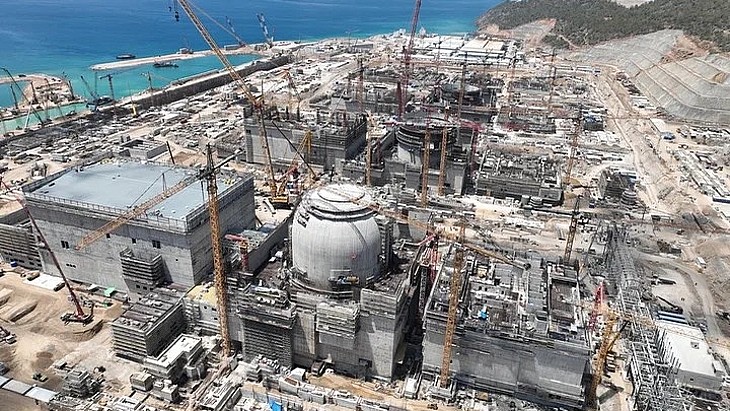
Tuesday, 5 March 2024
WTO conference ends in division and stalemate – does the global trade body have a viable future?

The 13th World Trade Organization (WTO) ministerial conference in Abu Dhabi has failed to resolve any issues of significance, raising the inescapable question of whether the global trade body has a future.
The three-day meeting was due to end on February 29. But late into a fourth extra day, the 164 members were struggling to even agree on a declaration, let alone the big issues of agriculture, fisheries and border taxes on electronic commerce.
The closing ceremony was sombre, and the ministerial declaration bland, stripped of the substantive content previously proposed. Outstanding issues were kicked back to the WTO base in Geneva for further discussions, or for the next ministerial conference in 2026.
Briefing journalists in the closing hours, an EU spokesperson noted how hard it would be to pick up the pieces in Geneva after they failed to create momentum at the ministerial conference. She predicted:
[Trade] will be more and more characterised by power relations than the rule of law, and that will be a problem notably for smaller countries and for developing countries.
Restricted access
That imbalance is already evident, with power politics characterising the conference from the start.
There were accusations of unprecedented restrictions on non-governmental organisations (NGOs) registered to participate in the conference. These bodies are crucial to bringing the WTO’s impacts on farmers, fishers, workers and other communities into the negotiation arena.
A number of NGOs have submitted formal complaints over their treatment by conference host the United Arab Emirates. They say they were isolated from delegations, banned from distributing papers, and people were arbitrarily detained for handing out press releases.
Critical negotiations were conducted through controversial “green rooms”. These were where the handpicked “double quad” members – the US, UK, European Union, Canada, China, India, South Africa and Brazil – tried to broker outcomes to present to the rest for “transparency”.
Influence of power politics
These powerful countries largely determined the outcomes (or lack of them). The US, historically the agenda-setter at WTO ministerial conferences, appeared largely disinterested in the proceedings, with trade representative Katherine Tai leaving early.
The final declaration says nothing about restoring a two-tier dispute body, which has been paralysed since 2019 by the refusal of successive US Republican and Democratic administrations to appoint new judges to the WTO’s appellate body.
The EU failed to secure progress on improvements to the appeal process. Likely Republican presidential nominee Donald Trump has already announced he would impose massive WTO-illegal tariffs on China if elected.
China, Japan, the US and EU – all big subsidisers of distant water fishing fleets – blocked an outcome aiming to protect global fish stocks, an issue already deferred from the last ministerial meeting.
The six Pacific Island WTO members lobbied tirelessly for a freeze and eventual reduction in subsidies. But the text was diluted to the point that no deal was better than a bad deal.
The EU, UK, Switzerland and other pharmaceutical producers had already blocked consensus on lifting patents for COVID-19 therapeutics and diagnostics, sought by 65 developing countries. A deal brokered in 2021 on COVID vaccines is so complex no country has used it.
Domestic and global agendas
India’s equally uncompromising positions also reflected domestic priorities. The 2013 Bali ministerial conference promised developing countries a permanent solution to prevent legal challenges to India’s subsidised stockpiling of food for anti-hunger programmes.
A permanent solution was a red line for India, which faces an election next month and mass protests from farmers concerned at losing subsidies.
Agricultural exporters, including New Zealand, tabled counter-demands to broaden the agriculture negotiations. The public stockpiling issue remains a stalemate, without any real prospect of a breakthrough.
India and South Africa formally objected to the adoption of an unmandated plurilateral agreement on investment facilitation.
The concerns were less with the agreement itself and more with the precedent it would create for sub-groups of members to bypass the WTO’s rule book. This would allow powerful states to advance their favoured issues while developing country priorities languish.
Crisis and transformation
The face-saver for the conference was the temporary extension of a highly contested moratorium on the right to levy customs duties at the border on transmissions of digitised content.
Securing that extension (or preferably a permanent ban on e-commerce customs duties) on behalf of Big Tech was the main US goal for the conference. Developing countries opposed its renewal, so they could impose tariffs both for revenue and to support their own digital industrialisation.
The moratorium will now expire in March 2026, so the battle will resume at the next ministerial conference scheduled to be held in Cameroon that year.
But there is every likelihood the current paralysis at the WTO will continue, and the power politics will intensify. As the previously quoted EU spokesperson also mused:
Perhaps the WTO needed a good crisis, and perhaps this will lead to a realisation that we cannot continue like this.
Ideally, that would result in a fundamentally different international institution – one that provides real solutions to the 21st century challenges on which the WTO is unable to deliver.![]()
Jane Kelsey, Emeritus Professor of Law, University of Auckland, Waipapa Taumata Rau
This article is republished from The Conversation under a Creative Commons license. Read the original article.
Thursday, 29 February 2024
India slowly taking export market share from China, study shows
 Smartphone with Chinese applications is seen in front of a displayed Indian flag and a “Banned app” sign in this illustration picture taken July 2, 2020. REUTERS/Dado Ruvic/Illustration/File Photo
Smartphone with Chinese applications is seen in front of a displayed Indian flag and a “Banned app” sign in this illustration picture taken July 2, 2020. REUTERS/Dado Ruvic/Illustration/File Photo- 28 February 2024, (Bloomberg) — India is chipping away at China’s dominance in electronics exports in some key markets as manufacturers diversify supply chains away from the world’s factory to other parts of Asia, a new study shows.
- The impact is most pronounced in the UK and US, where geopolitical tensions with China have increased in recent years.
- India’s electronics exports to the US as a ratio of China’s increased to 7.65% in November last year from 2.51% in November 2021, according to London-based Fathom Financial Consulting. In the UK, the share rose to 10% from 4.79%.
- India’s government is luring electronics manufacturers to the country with heavy incentives, such as tax cuts, rebates, easier land acquisition and capital support. The aim is to expand the domestic manufacturing industry in order to export more, and help businesses grow to global scale through partnerships.
- India houses Samsung Electronics Co.’s biggest mobile phone factory, while Apple Inc. makes at least 7% of all its iPhones in India through its contract manufacturer Foxconn Technology Group and Pegatron Corp.
- The rise in electronic exports is “likely the result of Foxconn’s increasing investment in India,” Andrew Harris, an economist at Fathom Financial Consulting, wrote in a note last week.
- India’s progress in gaining market share has been more limited in Europe and Japan, “suggesting a move towards dual supply chains (China plus one) rather than a complete abandonment of China-based production, at least for now,” Harris said. The report shows that India’s electronics exports as a ratio of China’s was 3.38% in Germany and 3.52% globally.
- Indian companies have been touting their role in multinationals’ ‘China plus one’ strategy, which sees manufacturers developing back-up capacity in other countries.India’s rising market share is a boost for Prime Minister Narendra Modi, who has touted his ‘Make in India’ plan as a way of creating jobs, expanding exports and making the economy more self reliant by reducing the need for imports. He’s widely expected to win a third term in office in elections due within a few months. India slowly taking export market share from China, study shows
Monday, 16 October 2023
Visa waiver for five countries to boost tourism

Thursday, 14 September 2023
Alibaba stock plummets as former CEO abruptly departs cloud unit just before IPO
- Alibaba’s stock on the Hong Kong stock exchange dropped more than 4% on Monday, 11 September 2023, following the unexpected resignation of Daniel Zhang, the former CEO of the Alibaba Group, from his role in the company’s cloud computing division.
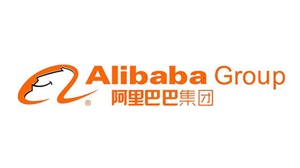
- The abrupt resignation has left investors unsettled and raised concerns about its potential impact on the subsidiary’s plans for an initial public offering (IPO) in the coming year.
- A mere two months after focusing solely on the cloud division, Zhang’s departure has paved the way for Eddie Wu, the newly appointed CEO of the Alibaba Group, to step in as the acting CEO and chairman of the cloud unit. This change comes at a challenging time for the Cloud Intelligence Group, which has been grappling with sluggish sales growth, which does not augur well for its planned IPO next year.
- The Cloud Intelligence Group holds a significant position within Alibaba, being the second-largest revenue source after domestic e-commerce. It contains some crucial assets, such as the generative artificial intelligence model Tongyi Qianwen and the messaging app Dingtalk.
- The unit experienced a 2% drop in revenue in the January–March period due to delayed projects and other factors. Analysts estimate it to be China’s largest cloud provider with a 34% market share.
- Despite facing these challenges, the cloud unit is on track for a substantial IPO, with an estimated value ranging from $41 billion to $60 billion.
- Meanwhile, concerns loom that the unit’s extensive data management responsibilities could draw regulatory scrutiny, especially in the light of growing concerns over data security and geopolitics.
- Alibaba has stated its commitment to proceeding with the spinoff of the cloud unit under a yet-to-be-named management team. The process is expected to be completed by May 2024.
- Citi analyst Alicia Yap noted that Zhang’s departure could have a temporary impact on Alibaba’s share price until a successor is appointed. She expressed concerns about the timing and process of AliCloud’s spinoff.
- Zhang, who succeeded Alibaba co-founder Jack Ma as group CEO in 2015 and chairman in 2019, assumed leadership of the cloud unit in December following a significant service outage. However, his tenure as group head was marked by intense regulatory scrutiny. His departure is seen by some, including Vey-Sern Ling, managing director at Union Bancaire Privee, as an opportunity for the cloud business to reset and start anew.
- Alibaba’s stock price fell by as much as 4.4% to HK$86.85, marking its lowest point since August 23. Ling has cautioned investors that the stock remains vulnerable to macroeconomic and geopolitical pressures.
- Alibaba made the announcement of Zhang’s departure from the cloud unit in a letter to staff on Sunday without specifying the reasons behind his decision. It was on the same day that Zhang was scheduled to pass on the group CEO role to Wu and the chairmanship to co-founder Joseph Tsai.
- Eddie Wu, one of Alibaba’s 18 co-founders, who began as a technology director in 1999 and now holds various key positions within the company, including CEO and chairman of Taobao and Tmall Group, as well as directorships in its Local Service Group and Alibaba International Digital Commerce Group, has been appointed to lead the cloud unit. Wu’s appointment is seen as a positive move for Alibaba, as he is closely aligned with Jack Ma and brings fresh energy to the business, according to Union Bancaire’s Ling.Alibaba stock plummets as former CEO abruptly departs cloud unit just before IPO
Tuesday, 5 September 2023
Brazil's president proposes common currency for BRICS nations
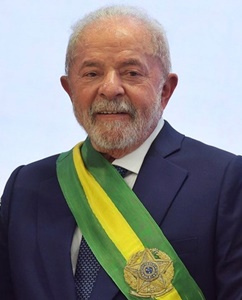
- The President of Brazil, Luiz Inacio Lula da Silva, popularly known as Lula, proposed the idea of establishing a common currency among the BRICS nations.
- BRICS is a grouping of the economies of Brazil, Russia, India, China, and South Africa. The predecessor of this group, before South Africa joined the other four in 2010 was known as BRIC.
- President Lula’s proposal aims to mitigate the susceptibility of the economies of most countries to the fluctuations in the value of the US dollar in trade and investment transactions.
- Lula put forth the suggestion on 23 August 2023 during a BRICS summit held in Johannesburg, South Africa.
- However several experts and officials have commented that there are formidable challenges associated with this initiative. Chief among them, they have said, are the significant economic, political, and geographical differences among Brazil, Russia, India, China, and South Africa.
- Lula holds the view that nations not using the dollar should not be compelled to engage in trade using that currency. He expressed support for the implementation of a shared currency within the Mercosur bloc, which comprises South American countries.
- Addressing the opening session of the summit, he stated that a BRICS currency would ‘expand our payment choices and diminish our exposure to vulnerabilities.’
- South African officials had previously stated that the discussion of a BRICS currency was not included in the summit's agenda.
- Back in July, India's foreign minister, S. Jaishankar, had asserted that the concept of a BRICS currency did not exist, and the agenda would include discussions on enhancing trade in the respective national currencies.
- Russian President Vladimir Putin, who participated in the gathering via video link, said the discussions would revolve around transitioning trade between member nations from the dollar to their respective national currencies. On the other hand, China has yet to provide a statement regarding this idea.
- President Xi Jinping, during his address at the summit, emphasized the importance of advancing ‘the reform of the international financial and monetary system.’
- During an interview with a radio station in July this year, Lesetja Kganyago, governor of the South African central bank had described the creation of a BRICS currency as a ‘political endeavor’. Kganyago has emphasized the need to establish of a banking union, a fiscal union, and the attainment of macroeconomic convergence before a common BRICS currency can be created.
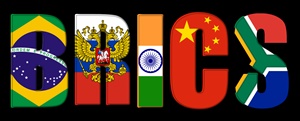
- A mechanism for enforcing compliance among countries is required, especially for those that deviate from the established framework. Also, the creation of a common central bank raises the question of its geographical location. Not an easy decision to reach.
- Trade imbalances pose a significant challenge, as highlighted by Herbert Poenisch, a senior fellow at Zhejiang University, in a blog post for the think-tank OMFIF.
- ‘All BRICS member nations primarily engage in trade with China, with minimal trade occurring among themselves.’
- BRICS leaders have expressed their desire to increase the use of their respective national currencies instead of relying heavily on the dollar. This shift has gained prominence, particularly after the substantial strengthening of the dollar last year due to the Federal Reserve's interest rate hikes and Russia's involvement in Ukraine, resulting in increased costs for dollar-denominated debt and imports.
- The sanctions imposed on Russia, leading to its exclusion from the global financial system last year, also heightened speculation that non-Western allies might transition away from the dollar.
- ‘In Tuesday's summit,’ Putin emphasized, ‘the relentless process of reducing our economic dependence on the dollar is gaining traction.’
- According to data from the International Monetary Fund, the dollar’s share of official foreign exchange reserves dropped to a 20-year low of 58% in the last quarter of 2022, and it fell to 47% when accounting for fluctuations in exchange rates.
- Nonetheless, the dollar continues to hold a dominant position in global trade, being involved in one side of nearly 90% of worldwide foreign exchange transactions, as reported by data from the Bank for International Settlements.De-dollarization would necessitate a widespread shift, with numerous exporters, importers, borrowers, lenders, and currency traders worldwide making independent decisions to opt for alternative currencies. Brazil's president proposes common currency for BRICS nations
Thursday, 17 August 2023
President Biden issues order restricting technology investments in China

- By Aniket Gupta, On 9 August 2023, US President Joe Biden signed an executive order that enforces restrictions on certain new American investments in China, specifically targeting sensitive technologies such as computer chips. The order also mandates government notification for investments in other technology sectors in China.
- The eagerly anticipated directive grants authority to the US Treasury Secretary to forbid or limit American investments in Chinese enterprises in three key sectors: semiconductors and microelectronics, quantum information technologies, and specific artificial intelligence systems. The order stated that the constraints would be applicable to ‘narrow subsets’ of the three domains, but exact details were not disclosed.
- The presidential order aims to prevent the utilization of American capital and knowledge to advance China's military modernization efforts and pose a threat to America’s national security. It seeks to reduce the involvement of private equity, venture capital, joint ventures, and new business ventures in China.
- The next day, the Chinese government expressed profound concern about the order and declared its right to undertake appropriate actions in response. The ministry said the US should uphold the principles of market economy regulations and fair competition and not artificially impede international economic and trade interactions and collaboration or introduce barriers.
- The proposal centers on investments in Chinese enterprises engaged in the creation of software for computer chip design and the development of manufacturing tools for such chips. The leading countries in this area are the US, Japan, and the Netherlands, while the Chinese government has been actively engaged in developing its own indigenous alternatives.
- According to the White House, that President Biden engaged with US allies over the proposal and took input from G7 nations.
- The executive order will exempt certain transactions and require investors to inform the government about their intentions for other deals. The treasury department indicated it might grant exceptions for specific transactions, which may include publicly traded instruments and transfers between US parent companies and subsidiaries.The order is set to be implemented in 2024 after several rounds of public input, which would include an initial 45-day comment period. Source: https://www.domain-b.com/, Image: https://pixabay.com/
Wednesday, 8 February 2023
India’s diplomatic influence rose in 2022 due to leadership, says Australian think tank; China displacing India as South Asian investor

Friday, 27 January 2023
Hongyanhe district heating project into final stages : Energy & Environment
.jpg?ext=.jpg)
